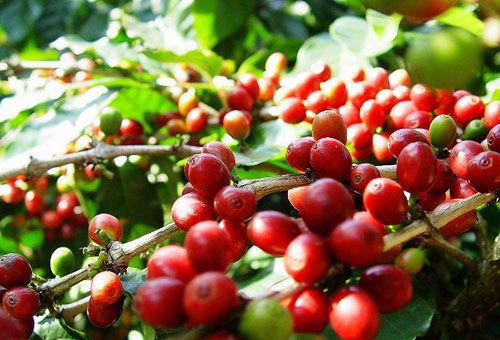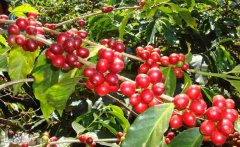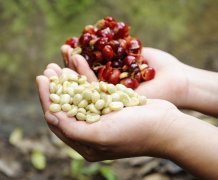Island Coffee Bean Papua New Guinea Coffee How to describe Coffee Cloth Powder Coffee Net
The 1975 frost destroyed most of Brazil's coffee crop, but spurred coffee growth in Papua New Guinea. The Government has introduced a scheme to finance the creation of coffee plantations of approximately 20 hectares by rural or collective landowners. This measure has indeed increased the penetration of coffee cultivation into the local economy, resulting in an increase in annual coffee production.
Coffee from Papua New Guinea:
In Papua New Guinea, about 75 percent of coffee production comes from small, local farms. Many farms cultivate land in forested areas, and some farms are deep in forests, almost isolated from the rest of the world. Coffee in the country is grown at altitudes of 1,300 - 1,800 meters, so it is of high quality. Coffee is grown in some lowlands, but relatively little is produced. Locally grown coffee is mostly grown naturally, due to the problems and costs of transporting fertilizers and pesticides to farms.
Although coffee trees grow vigorously in some places, the coffee beans harvested vary in maturity and size due to the lack of persistence of growers. Among the higher grades, AA grades were rare. Generally, the ones that could be bought were A grades and AB grades. The main characteristics of A-grade coffee are: fullness of particles, light acidity, and endless aftertaste after drinking.

Important Notice :
前街咖啡 FrontStreet Coffee has moved to new addredd:
FrontStreet Coffee Address: 315,Donghua East Road,GuangZhou
Tel:020 38364473
- Prev

Coffee market what are the coffee networks for individual coffee in El Salvador coffee producing areas
Market for Honduran coffee: all coffee in Honduras is exported on loans from individual transporters, mostly to the United States and Germany.
- Next

Papua New Guinea coffee characteristics coffee beans quotes coe coffee pressed powder
Papua New Guinea coffee characteristics: flavor: varied, rich taste, full particles, a wide range of uses suggested roasting method: medium to deep roasting, used to prepare mixed coffee drinks, excellent results ★★: good
Related
- Does Rose Summer choose Blue, Green or Red? Detailed explanation of Rose Summer Coffee plots and Classification in Panamanian Jade Manor
- What is the difference between the origin, producing area, processing plant, cooperative and manor of coffee beans?
- How fine does the espresso powder fit? how to grind the espresso?
- Sca coffee roasting degree color card coffee roasting degree 8 roasting color values what do you mean?
- The practice of lattes: how to make lattes at home
- Introduction to Indonesian Fine Coffee beans-- Java Coffee producing area of Indonesian Arabica Coffee
- How much will the flavor of light and medium roasted rose summer be expressed? What baking level is rose summer suitable for?
- Introduction to the characteristics of washing, sun-drying or wet-planing coffee commonly used in Mantenin, Indonesia
- Price characteristics of Arabica Coffee Bean Starbucks introduction to Manning Coffee Bean Taste producing area Variety Manor
- What is the authentic Yega flavor? What are the flavor characteristics of the really excellent Yejasuffi coffee beans?

